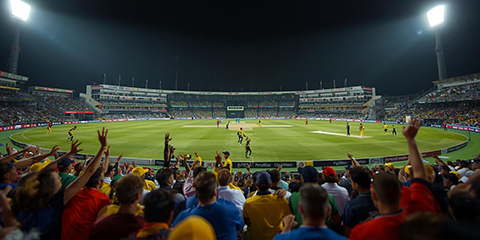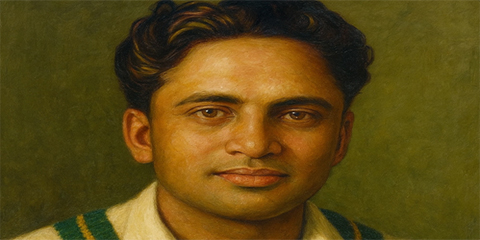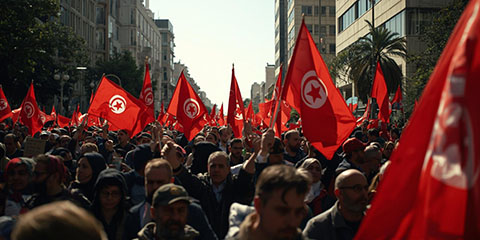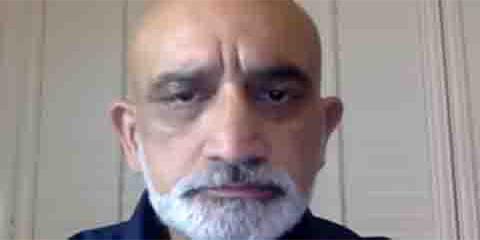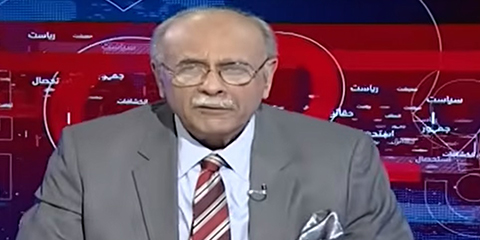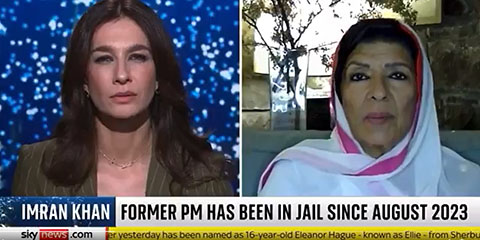PSL vs IPL: Franchise valuation gap reveals PCB's catastrophic mismanagement
JournalismPakistan.com | Published last month | Dr. Nauman Niaz (TI)
Join our WhatsApp channel
PSL franchise valuations pale against IPL's USD 18.5 billion empire, while Pakistan Cricket Board's bureaucratic dysfunction, flawed selections, and mismanagement strangle domestic cricket's potential and franchise owner dissent.Summary
ISLAMABAD— There's a glint in the eye of the CEO of the Pakistan Super League, the flare of recent trends, the promise of prosperity, the intoxicating scent of a future built in gold. But let us step out of the glare, clear the fog, and confront reality with hard, unambiguous numbers.
PSL Franchise Fees Reveal Modest Market Valuations
In case there remains a question, a doubt about what is truly happening on the valuation front, let us examine the truth lying bare: the current franchise fees for the PSL's 10th edition:
• Multan Sultans USD 6.3 million
• Karachi Kings USD 2.6 million
• Lahore Qalandars USD 2.5 million
• Peshawar Zalmi USD 1.6 million
• Islamabad United USD 1.5 million
• Quetta Gladiators USD 1.1 million
Let's be fair, one might add a 25 % premium. Let's be generous and even entertain a 30 % hike. But even then, the needle barely moves. A ripple in a pond, while waves elsewhere crash against the shores.
IPL's USD 18.5 Billion Business Value Dwarfs PSL Performance
Now consider the leap: the Indian Premier League. Not just a tournament, but a juggernaut. According to the 2025 IPL Valuation Study by Houlihan Lokey, the total business value stands at USD 18.5 billion, with a year-over-year growth of 13 %. Meanwhile, brand value crosses USD 3.9 billion, up by 13.8 %. These numbers aren't wishing on stars; they are carved in stone.
The valuations of the IPL franchises read like verse:
• Royal Challengers Bangalore USD 269 million (+18.5 %)
• Mumbai Indians USD 242 million (+18.6 %)
• Chennai Super Kings USD 235 million (+11.6 %)
• Kolkata Knight Riders USD 227 million (+19.2 %)
• Sunrisers Hyderabad USD 154 million (+19.4 %)
• Delhi Capitals USD 150 million (+14.5 %)
• Rajasthan Royals USD 147 million (+16.0 %)
• Gujarat Titans USD 145 million (+14.4 %)
• Punjab Kings USD 141 million (+39.6 %)
• Lucknow Super Giants USD 128 million (+13.0 %)
Broadcast Rights Gap Highlights Financial Disparity
Contrast this with the PSL's last two years of broadcast rights: PKR 6 billion plus taxes and other costs. All told, close to PKR 9 billion in a market promising not more than PKR 5 billion. The gap yawns like an abyss. For the IPL, the media rights for 2023-2027 are worth USD 6.3 billion. With Jio Star's subscriber base surpassing 500 million, IPL's subscription revenue alone could top USD 2.3 billion per season. Over five seasons, over USD 10 billion in subscriptions alone. This isn't growth, it's an ascending comet.
Meanwhile, the PSL? Marginal rises. A sprint compared to a marathon. The IPL has long been running the fiscal marathon; the PSL is still tying its laces. And now to the intellectual integrity that claims that the PSL is "rising" and the IPL is "declining." Let us examine the anatomy of that assertion. Framing it as "kindergarten stuff" vs. "Oxford alumni" doesn't reveal insight; it reveals ignorance dressed as bravado. It doesn't challenge intellect; it mocks it.
Ali Tareen's Investment Deserves Recognition
If one is to provoke such claims, then deliver the results. Show the numbers. Do the work. Because the numbers… they speak for themselves. They show what is real, not what one desires to be real. The PSL may whisper ambition; the IPL shouts legacy. Here's a detail worth pausing on: if these numbers are correct, then HBL Pak paid to the PSL USD 36.5 million from 2019-2025, around USD 5.21 million per year. In contrast, Ali Tareen paid USD 44.5 million over 2019-2025, USD $6.35 million × 7 years. Does he not deserve the same recognition, respect, and value, plus a pat on the back and a meeting over tea and biscuits? Do not challenge intellect. Produce results.
Selection Process Exposes Systemic Dysfunction
Enter the theatre of selection, the spectacle of performance. Rashid Latif's post hit like a blade, slicing through the fog of polite fictions. Two roles: captain and wicket-keeper. One stands, commands; the other crouches, unseen. Both carry burdens.
In Pakistan's domestic cricket, wicket-keepers are top-order kings chasing glory. But at the international level, ghosts. Shuffled like pawns. Today No. 3. Tomorrow No. 7. The next, nowhere. Since Bangladesh, Sahibzada Farhan is the second choice. Defined. Modest. Then Mohammad Haris dropped. Usman Khan parachuted in, gloves in hand, and Farhan politely sidelined. Wasim Jr. and Salman Mirza linger in the dugout as Naseem Shah waltzes straight into the XI.
This is no selection. It is choreography. A theatre of obedience. Strings pulled, smiles rehearsed, twirls executed. And all the while, the numbers stack like paperwork no one wants to file:
• Salman Ali Agha: 31 runs, in four positions, strike-rate 109.11
• Mohammad Haris: 34 innings, scattered like loose coins across the order
• Usman Khan: 18 innings, a man without identity
• Hasan Nawaz: shuffled so much, one wonders if he remembers what an opening feels like.
Contract Mismanagement Undermines Player Trust
Then the cruelty of contracts: Hasan Ali, once promised security with a B-category deal, now watches from the sidelines. Haris Rauf, too. Shadab Khan, his name still on the list, his kit bag gathering dust. The rot is systemic. Cricket's mirror to a larger rot. A powerful, familiar cabal. Hands all over everything, boardrooms, selection meetings. They guard the game not to nurture it but to bleed it dry. Milking the golden goose or, if patience runs thin, gutting it in one ruthless swoop.
Multan Sultans Controversy Reveals Power Dynamics
Even the most carefully managed franchise, the Multan Sultans, is not spared. Ali Tareen, an idealist, builder, dared to suggest changes to the PSL, voiced frustrations. And what reward? Pride shattered, rebellion misinterpreted. In Pakistan cricket, pride is thinner than paper and heavier than iron. The board speaks of expansion: two new teams, more matches, bigger dreams. Yet there are no bids. No tenders. No substance. Only promises. Caresses. After Tareen's clash, the league's spokesperson appeared on TV: polished, rehearsed. But when Multan was mentioned, the silence was deafening. Hollow. Guilty. Journalists lobbed questions, but the answers never came. Perhaps they were never meant to. The circus goes on.
Pakistan cricket is no longer a sport. It's a stage. The players change. The script never does. Somewhere, in the shadows, the ring-master grins. And here's the damning final note: when the numbers speak with clarity, when the ambitions of one league tower over the fumbling dreams of another, it is more than just a discrepancy. It is a failure of vision. A betrayal of promise. For the PSL to call itself a rising force when it remains tethered to modest valuations, narrow markets, and broken processes is not ambition; that is illusion.
For selections to be choreographed, for contracts to be hollow, for proud franchises to whisper dissent and be silenced, that is not governance, that is decay. So let this stand: the scoreboard of integrity, of ambition, of actual value, it doesn't lie. And when you compare the glimmer with the blaze, the scaffold with the skyscraper, recognise that the greatest insult isn't the failure of the league beside it, but the self-deception within.
Pakistan Cricket Board: A Fortress of Bureaucracy
There is a building in Lahore that hums with the quiet static of inefficiency. Inside, under fluorescent lights, sit men in pressed suits and wrinkled souls. They shuffle papers, sign memos, and discuss cricket as though it were an inconvenience, an errand to be endured before lunch. The Pakistan Cricket Board, a fort to bureaucracy, where dreams are filed, stamped, delayed, and eventually forgotten. This is not just administration. It is a ritual. It is the art of motion without movement, of activity without consequence. And in this theatre of order, Pakistan cricket, vibrant, mercurial, and maddeningly gifted, finds itself trapped like a songbird in a steel cage, its melody muffled by the droning of bureaucrats working in irrelevant offices.
Paperwork Replaces Passion in PCB's Cosmos
Once upon a time, cricket boards were meant to serve cricketers. To build pathways, to nurture talent, to protect the sanctity of the game. But in the PCB's bureaucratic cosmos, paperwork has long replaced passion. The file is king. The note is law. The stamp that sacred, circular symbol of power is the final arbiter of dreams. Every decision, no matter how small, must crawl through the serpentine corridors of hierarchy. A talent identification proposal? Needs a summary, an endorsement, a subcommittee, a counter-endorsement, and then the blessing of a chairman whose interest in domestic cricket is roughly equivalent to a fish's in philosophy.
In this system, agility dies. Vision is suffocated in drafts and revisions. Even hope must be routed through "proper channels."
The tragedy isn't that bureaucracy exists; all institutions require it. The tragedy is that in Pakistan's cricketing heart, bureaucracy has become identity. The PCB does not manage cricket; it manages itself.
Chairman Turnover Cycle Perpetuates Dysfunction
Every few years, like the change of seasons or governments, a new chairman arrives. Each one arrives with the same rhetoric: reform, professionalism, modernization. They promise merit, transparency, and performance. Their first act is almost always symbolic, a reshuffle, a "task force," a fresh coat of paint on the same decaying walls.
But symbolism does not repair a foundation. In time, their promises fade into the same haze of compromise. They realize that the PCB is not a board; it is a bureaucracy built atop a patronage network. It feeds not on excellence, but on loyalty. Those who nod the right way, who sign without question, thrive. Those who challenge, who dare to think differently, are quietly exiled to cricket's wilderness. Commentary gigs, private academies, memory. Thus, the PCB devours its reformers and fattens its courtiers. Every chairman becomes a mirror image of the one before, another custodian of the same dysfunction. And the game, forever hopeful, waits for a savior who never stays long enough to matter.
Domestic Cricket Suffers Under Bureaucratic Rule
Step outside the boardroom, into Pakistan's domestic circuit, and you see the fallout of bureaucratic rule. Grounds unkempt. Players unpaid. Contracts delayed. Talents mismanaged into oblivion. The PCB loves its slogans: "grassroots development," "pathways to excellence," "revival of domestic cricket." But beneath the PR gloss, the system is cruelly indifferent. First-class cricketers travel in buses older than their careers. The match fee for a 4 day match is PKR 30,000, while a tennis tape ball player for an eight-over match gets PKR 60,000. PKR 30,000 for four days of toil, and then you expect cricketers will be drawn in to participate in flimsily organized first-class tournaments. They hunt for T20 league contracts, and in the process, the quality has gone down since red ball makes a cricketer, not a 4-over flirtation now called "buzz cricket". Most of the batters bat in the top order and become prominent since they get to play more overs in T20 cricket. Once a Pakistan team is formulated, you find a dearth of quality and specialized middle-order batsmen who could survive, rotate the strike, and play spin adequately.
Promising youngsters wait months for stipends that barely pay rent. Provincial associations function like forgotten fiefdoms, loyal not to performance but to patronage.
Selection Committees Stack Deck Against Merit
And the selection process that perennial farce. Committees stacked with loyalists. Trial matches that exist merely to validate pre-decided names. A young player's future can be decided not by performance but by proximity to the selector's ear, or the minister's office. When merit must first pass through the filter of influence, mediocrity becomes policy. And the cost is immense: lost careers, fractured morale, and a nation perpetually haunted by "what could have been."
Of course, there will be press conferences. There always are. PowerPoint presentations with words like "vision," "strategy," and "KPIs." A glossy new logo. A "five-year plan." The illusion of reform, polished to a corporate shine. But listen closely. The language is hollow. The targets are vague. Accountability dissolves in ambiguity. Who failed? The "process." What went wrong? "Circumstances." Who decides? "The Board."
Every failure finds refuge in vagueness. Every mistake is buried under a meeting's minutes. In the PCB, even blame is bureaucratized. Meanwhile, the cricket goes on, somehow. Because it must. Because somewhere, beyond the paperwork and the politicking, there still beats the stubborn heart of Pakistan cricket: the players who refuse to give up, the fans who fill stadiums out of faith, the coaches in backwater academies who coach not for salaries but for salvation. They are the defiance that bureaucracy cannot kill.
Ali Tareen's Dissent Met with Dismissal
When Ali Tareen spoke, when he dared to question, to suggest, to point at the cracks in the system, he was not a franchise owner airing frustration. He was a man breaking an unwritten code: thou shalt not question the Board. And the response was classic PCB, defensive, dismissive, draped in legalese. Silence where there should have been dialogue. Reprimand where there should have been reflection. In a system built on obedience, dissent is treated as heresy. Multan's pride was collateral damage in an ego's battlefield. For daring to care too much, Tareen was cast as troublesome. In the PCB's world, passion must never outshine power.
PCB Failures Mirror Pakistan's Institutional Story
To trace the PCB's failures is to trace Pakistan's own institutional story, the promise of talent shackled by incompetence, the romance of possibility ruined by politics. The same cycles replay, generation after generation.
The PCB has been through constitutions and committees, military men and corporate men, reformers and romantics. And yet, it remains the same: an empire of files, ruled by those who understand authority but not cricket. When the team fails, they sack the coach. When the coach fails, they sack the selector. When everyone fails, they rewrite the constitution. It is a change for appearance, not for purpose. And so, the wheel turns endlessly, creaking under the weight of its own futility.
Pakistan Cricket Endures Despite the Board
And yet, somehow, Pakistan cricket lives. It refuses to die. It stumbles, it bleeds, it quarrels with itself but it endures. Because the PCB, for all its bureaucracy, cannot own the spirit of this game. It cannot quantify the noise of Gaddafi Stadium when Shaheen takes a wicket. It cannot file the tears of a debutant from Sialkot whose bat was bought on credit. It cannot measure the madness of a people who, in defeat and despair, still believe that tomorrow, always tomorrow, will be different. The PCB runs cricket on paper; the people live it in their pulse.
And so the boardrooms hum on meetings about meetings, reports about reports. The same hands sign the same papers. The same failures are repackaged as initiatives. The same optimism is slaughtered, year after year, on the altar of bureaucracy.
Outside, the game keeps playing, wild, improvised, alive in a way no spreadsheet can capture. But one day, if the PCB does not awaken, if it continues to choose control over creativity, obedience over originality, it will find that the game it claims to govern has outgrown it. That cricket in Pakistan no longer needs the PCB to exist. That the fans, the players, the dreamers have built their own altar elsewhere. Because even the most tangled bureaucracy cannot outlast passion. And when the echoes in those sterile corridors fade, when the last file gathers dust in silence, cricket will still be played, somewhere, under the open sky.
Not because of the Board. But despite it.
Because if you will not produce results, if you will not challenge your own structural rot, then you may dress your hopes in slogans, but history will always read truth. And the truth of these numbers, of this theatre, of this staging of sport as spectacle, is scathing. The ring-master may clap, the lights may shine, the carnival may move on, but the record waits. And it never forgets.
Dr. Nauman Niaz is a civil award winner (Tamagha-i-Imtiaz) in Sports Broadcasting & Journalism, and is the sports editor at JournalismPakistan.com. He is a regular cricket correspondent, having covered 54 tours and three ICC World Cups, and having written over 3500 articles. He has authored 15 books and is the official historian of Pakistan Cricket (Fluctuating Fortunes IV Volumes - 2005). His signature show, Game On Hai, has been the highest in ratings and acclaim.







